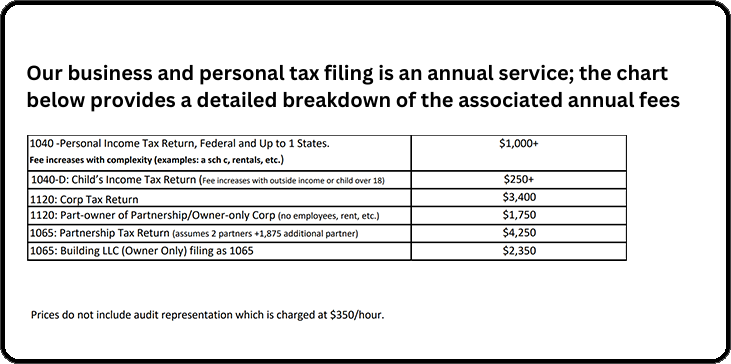Tune in to our podcast series: The Dental Board Room
Listen Now

For many dentists, tax season feels like a race to find as many deductions as possible. After all, the more you can deduct, the less you pay the government, right?
That’s how it seems in the moment. Your CPA might recommend a large write-off. A supplier might say, “Buy this new equipment before December and you’ll save thousands in taxes.” And it feels smart, strategic even. You’ve worked hard, built a practice, and now you’re making the system work for you.
But fast forward one year. Suddenly, your tax bill jumps. Cash feels tighter even though production hasn’t dropped. And the question arises: “Where did the money go?”
This is the story behind one of the most common financial traps in dentistry, a well-intentioned tax move that leads to years of financial stress.
The heart of this problem often sits inside a single section of the U.S. tax code: Section 179.
Section 179 lets business owners deduct the full cost of certain assets like dental chairs, imaging machines, or milling units the same year they buy them. Instead of depreciating the cost slowly over time, you take the entire expense up front.
Sounds like a win, doesn’t it? You lower your taxable income this year, keep more cash in your account, and maybe even reward yourself for a great year of production.
But here’s what often happens behind the scenes:
Because the tax bill looks smaller, it feels like you’ve gained room to spend. But in truth, the deduction didn’t create money; it just shifted when the taxes are paid. Next year, the loan payment remains, but the deduction is gone.
Then comes the surprise.
The following year, your production might stay steady. Revenue looks the same, maybe even slightly higher. But your taxable income suddenly jumps because you no longer have that massive deduction. At the same time, your loan payments continue, eating into cash flow that now feels tighter than ever.
Dentists often call their accountants confused:
“Why is my tax bill so much higher when I didn’t make more money?”
The answer lies in timing. You borrowed the deduction from the future. That first-year tax break pulled forward all the benefits, leaving nothing for the years when you’re still paying for the equipment.
So now you’re paying:
It’s not that you made a mistake. You simply used a tax strategy designed for flexibility but not for balance.
Here’s where things often start to unravel.
When cash flow starts to feel tight, most business owners do what seems reasonable: they look for ways to make the practice more efficient or to boost production. In dentistry, that usually means investing in new technology: a scanner here, a laser there, maybe another piece of equipment that promises to save time or attract more patients.
And because these purchases are often financed, it’s easy to justify them.
“We’ll get another deduction this year,” you tell yourself.
But then the same cycle starts again. Each new piece of equipment adds another loan, another payment, another layer of pressure. The tax breaks fade, but the debt stays.
What started as a smart strategy slowly turns into a pattern: buy, deduct, pay off debt, repeat.
It’s a quiet spiral. The practice gets busier, the numbers look bigger, but the sense of security never really shows up. You’re producing more than ever, yet somehow, the bank account still feels uneasy.
This “debt layering” is one of the most under-discussed stress points for dental professionals. It’s not a spending problem; it’s a timing problem rooted in how the tax code rewards short-term action but ignores long-term balance.
There’s another layer to this story that few talk about: basis.
Think of basis as your personal equity inside your practice. It’s the amount of money you’ve truly put in, not just what the books say. When you take out more money than your basis allows, especially after big deductions, you can accidentally trigger excess distributions, which the IRS treats as taxable income.
Here’s how it happens:
It’s the ultimate frustration: paying tax on money you never saw. Many dentists never see this coming because, day to day, their cashflow feels perfectly fine. The practice is busy, bills are paid, and there’s money in the account. But behind the scenes, the numbers tell a different story. On paper, the business now owes more in taxes than anyone expected.
And the IRS doesn’t care that it’s just an accounting technicality; it still counts.
This gap between what looks right in your books and what’s actually happening with real cash can quietly catch up to you. What seemed like a harmless paper deduction at first can slowly chip away at your financial foundation, leaving you wondering how something so small caused so much strain.
The good news? You can avoid this trap entirely with a few strategic shifts.
1. Time deductions with loan repayment.
Instead of taking the full Section 179 deduction in one year, spread it out to match your payment schedule. That way, your taxable income stays steadier, and your cash flow remains predictable.
2. Keep cash flow planning simple and transparent.
Many dentists rely solely on their CPAs for tax projections, but it’s worth maintaining a separate, easy-to-read cash flow tracker. See where every dollar goes: loan payments, payroll, and personal expenses. This clarity prevents accidental overspending during “good months.”
3. Ask your CPA the right questions at the right time.
Before approving any big equipment purchase, ask:
The right tax strategy isn’t about minimizing taxes; it’s about maximizing control.
4. Align with a year-round advisor, not a once-a-year accountant.
Most surprises happen because planning stops in April. A proactive financial advisor or CPA who checks in quarterly can help you anticipate shifts in income, loans, or deductions long before they hit your wallet.
5. Focus on stability, not speed.
A steady financial rhythm, predictable income, measured growth, and consistent savings build far more wealth than chasing tax deductions or trendy investments.
In the world of dentistry, smart people often fall prey to clever-sounding strategies. Section 179 isn’t the villain; it’s a tool. But when used without a clear plan, it becomes the spark that ignites years of stress.
One rushed tax move can turn into a long-term financial burden. The good news is, it doesn’t have to be that way. The real solution lies in timing, awareness, and simplicity.
Think long-term. Match your deductions to your debt. Ask questions before signing anything that sounds “tax-smart.”
Ultimately, real financial success for dentists isn’t built on clever tax maneuvers; it’s built on calm, predictable, and intentional choices.
Want to hear this conversation come to life? Watch our podcast to explore how one tax decision can shape your financial future and learn practical, real-world ways to build lasting stability in your dental practice. We break it down with real examples, clear insights, and strategies that actually work.
Wes knows what's best for dental practices. He's been doing this for a long time and he sees lots of practices. He can tell me how our practice is doing, and what we can do to increase our productivity. With past CPA's, there were no ideas. It was all coming from me, saying "I think I can do better, but I don't know how." I come in to meet with Wes and he says "You CAN do better, and I know how."
PracticeCFO is in hundreds of dental offices around the country. They know what numbers should look like. They know what percentages of payroll, rent and supplies should be, and they will hold you accountable to those numbers, which will really help you stick to your plan and your path of growth and savings. That is invaluable
Whenever something comes up, whether it's building or practice related and we weren't sure where the numbers would go, PracticeCFO has been instrumental in helping us figure that out. I can't say enough of how important that is - that it goes beyond that initial partnership. They make sure this business marriage works.
When I go home from work, I don't spend a whole lot of time stressing about what my books look like, or how much I owe in taxes. By using PracticeCFO, the burden of keeping track of a lot of the big financial numbers and metrics are taken off my plate.
PracticeCFO helped me develop a plan for the future. I have colleagues that work with other accountants that don't have a plan - they just look at the numbers of the practice and that's it. There's no plan for 10, 20 years from now. But with PracticeCFO, you get that. PracticeCFO makes you feel like you're they're only client.
(In reference to his practice sale) What could've been super stressful, wasn't! When picking John and Wes, it was from word of mouth recommendations and other people's experiences from the past that really did it for me. And it turns out that those recommendations were right on the line.
Wes knows the business side of dentistry. His comprehensive plan will organize your personal and professional finances so you can focus on taking care of patients. Massive ROI.
I can’t say enough good things about everyone at PracticeCFO. Everyone on the team is professional, organized, knowledgeable, helpful and kind. They also respond to emails and phone calls immediately and are always happy to help. They have helped me navigate year-to-year as a business owner. PracticeCFO gives me peace of mind that my business is in good hands.
I love Practice CFO! They have helped me obtain a practice and maintain a practice. They are incredible people who are on top of everything and make owning and running the business portion of a practice easy. They couldn’t be better for my business and my sanity. They have every detail of the business and taxes taken care of where all I have to do is show up and follow their easy steps to success!
Practice CFO has the best tools I’ve seen for personal tax and financial planning in addition to top-tier corporate tax and accounting services. I have been very pleased with the level of quality service. They manage my monthly bookkeeping and accounts payable. It is a great system and saves me a ton of time, and it allows us to have monthly financial statements within a week of month end.

This will close in 0 seconds